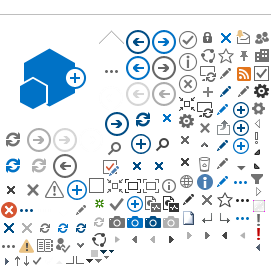The latest version of Connect 2030 (ITU Resolution 200, Rev. Bucharest, 2022) echoes ITU's new strategic plan, grouping all specified targets for global digital development under two main goals:
Goal 1: Universal connectivity by 2030
This calls for ITU and its members to enable and foster universal access to affordable, high-quality and secure digital technologies.
- Target 1.1:
Universal broadband coverage
- Target 1.2:
Broadband services to be affordable for all
- Target 1.3:
Broadband access for every household
- Target 1.4:
Ownership of and access to Internet-enabled devices for all
- Target 1.5:
Access to the Internet for all schools
- Target 1.6:
Improved cybersecurity preparedness for all countries
- Target 1.7:
Universal access to the Internet by all individuals
 To fulfil these aims, ITU must promote universally accessible, affordable, high-quality, interoperable, and secure infrastructure, services; provide international coordination to prevent and eliminate harmful interference to radiocommunication services; facilitate the worldwide standardization of telecommunications; and leverage existing and emerging technologies, connectivity solutions, and business models to close the digital divide, ensuring access in all countries and regions, for all of humanity.
To fulfil these aims, ITU must promote universally accessible, affordable, high-quality, interoperable, and secure infrastructure, services; provide international coordination to prevent and eliminate harmful interference to radiocommunication services; facilitate the worldwide standardization of telecommunications; and leverage existing and emerging technologies, connectivity solutions, and business models to close the digital divide, ensuring access in all countries and regions, for all of humanity.
Goal 2: Sustainable digital transformation by 2030
This calls for ITU and its members to foster equitable and inclusive technology use:
- Target 2.1:
All digital gaps – particularly gender, age, and urban/rural – to be bridged
- Target 2.2:
Majority of individuals to have digital skills
- Target 2.3:
Universal usage of Internet services by businesses
- Target 2.4:
Majority of individuals accessing government services online
- Target 2.5:
Significant improvement in tech and telecom contributions to climate and environmental action
 To fulfil these aims, ITU must leverage digital technologies for sustainable development, helping to build an inclusive society and economy; work to close the digital divide for everyone, including women and girls, youth, indigenous peoples, older persons, persons with disabilities, and persons with specific needs; and promote and enable digital transformation all across spheres of life and activity – particularly to address the dual climate and environmental crisis, foster the continued advancement of science, promote sustainable exploration of Earth and space, and encourage resource use for the benefit of all.
To fulfil these aims, ITU must leverage digital technologies for sustainable development, helping to build an inclusive society and economy; work to close the digital divide for everyone, including women and girls, youth, indigenous peoples, older persons, persons with disabilities, and persons with specific needs; and promote and enable digital transformation all across spheres of life and activity – particularly to address the dual climate and environmental crisis, foster the continued advancement of science, promote sustainable exploration of Earth and space, and encourage resource use for the benefit of all.
How Connect 2030 began
ITU first adopted the Connect 2030 Agenda in 2014, aiming to align global technology and telecommunications growth with the Sustainable Development Goals (SDGs) set out by the United Nations for 2030.
The original Connect 2030 framework highlighted five key goals for ITU's work to advance global connectivity:
- Growth: Enable and foster access to and increased use of telecommunications/ICT (information and communications technology) in support of the digital economy and society.
- Inclusiveness: Bridge the digital divide and provide broadband access for all.
- Sustainability: Manage emerging risks, challenges and opportunities resulting from the rapid growth of telecommunications/ICT.
- Innovation: Enable innovation in telecommunications/ICT in support of the digital transformation of society.
- Partnership: Strengthen cooperation among the ITU membership and all other stakeholders. in support of all ITU strategic goals
Why it still matters
The common strategic framework outlined in Connect 2030 has encouraged accountability as the ITU community works to expand connectivity, address the global digital divide, and promote tech and telecoms for the good of all.
The latest edition (ITU Resolution 200, Rev. Bucharest, 2022) calls for universal, secure, reliable, and affordable connectivity as a requirement to accelerate the UN 2030 Agenda. Universal connectivity and sustainable digital transformation are also recognized as vital for ongoing World Summit on the Information Society (WSIS) action lines.
The 2022 resolution also affirms the critical role of digital connectivity in effective crisis response and recovery, particularly based on the experience amid the COVID-19 pandemic.
Last update: April 2024
More information:
ITU Strategic Plan
